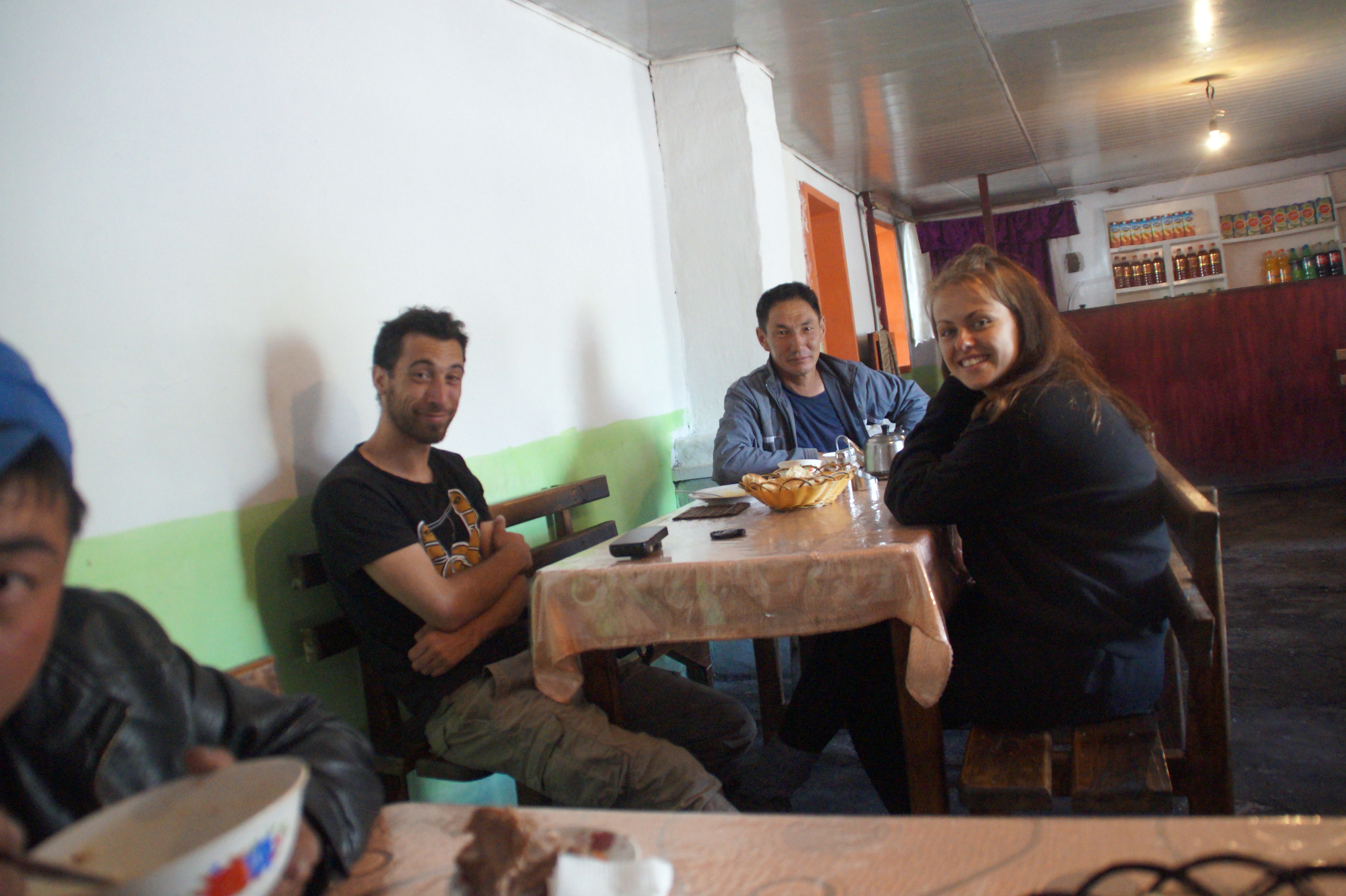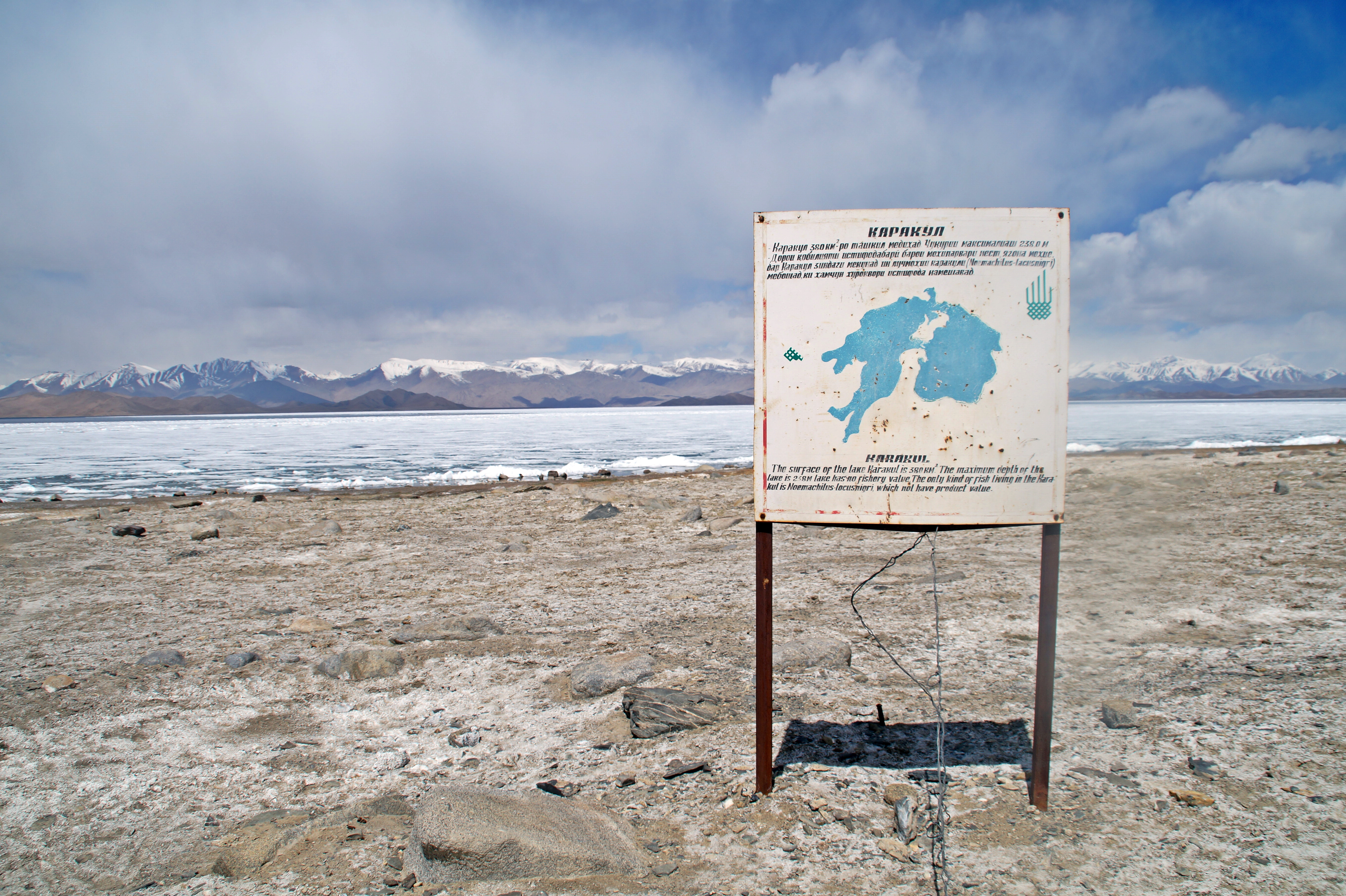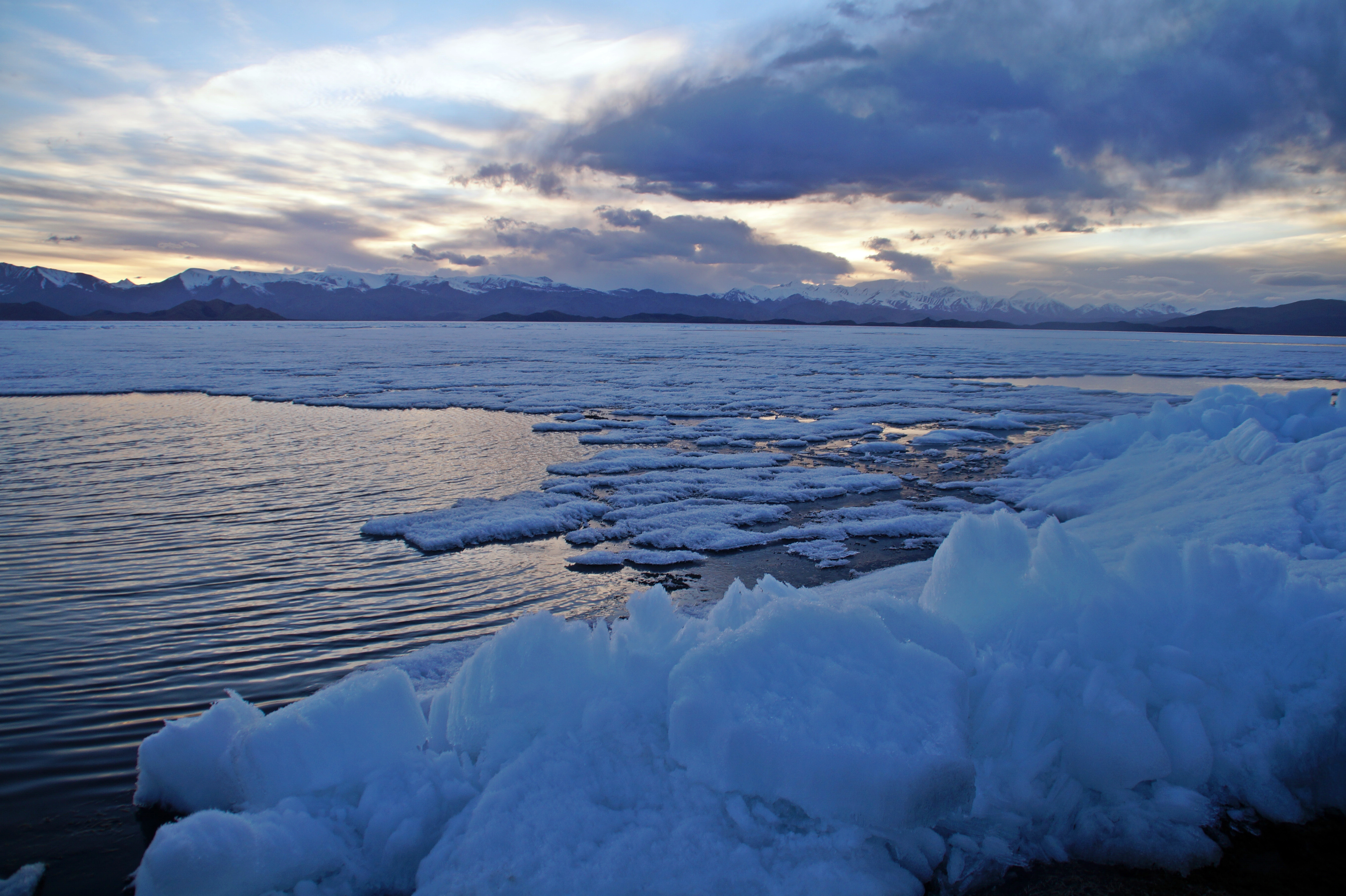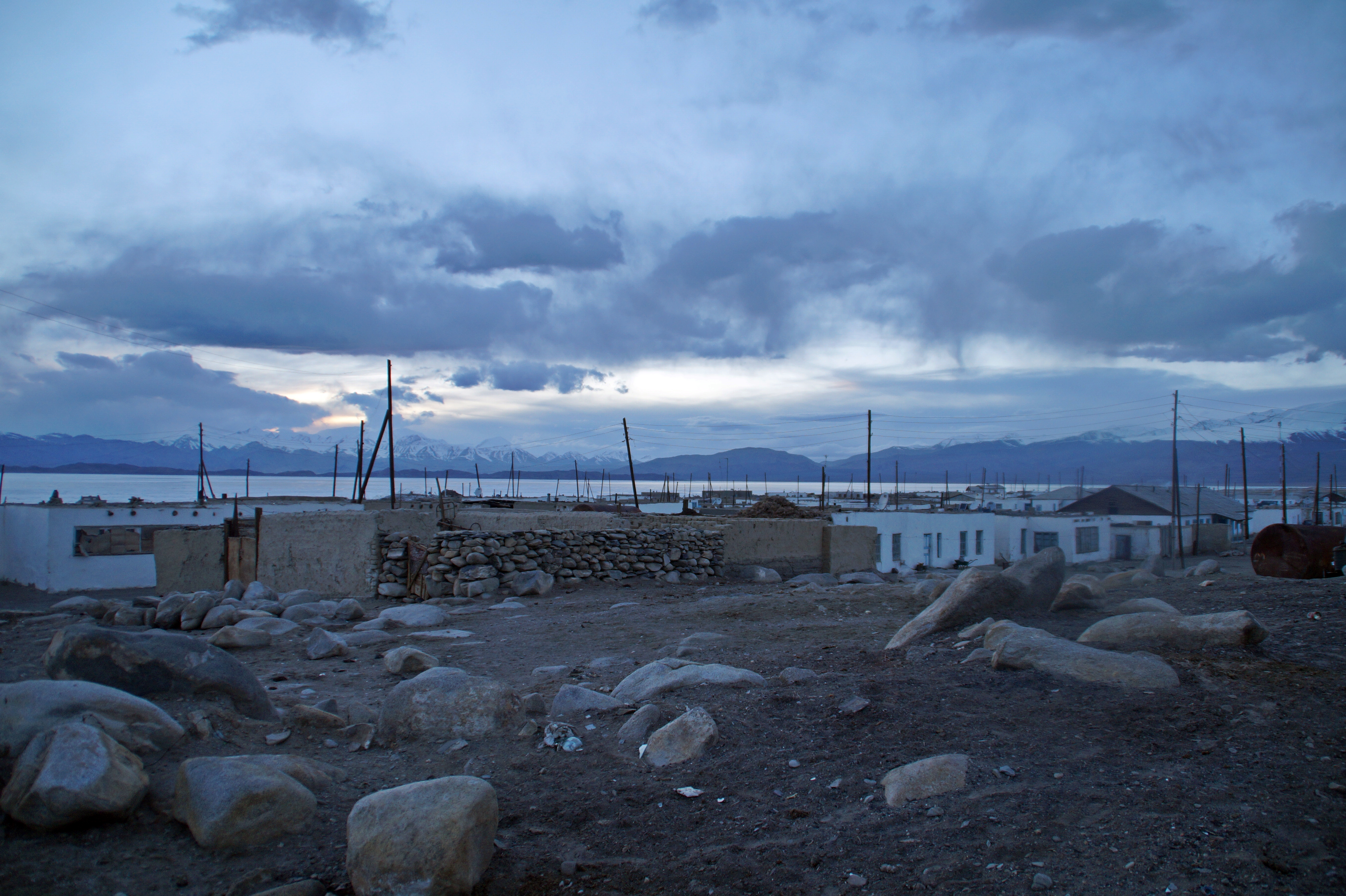On the day that we got to Osh, we started researching about Tajikistan, as we wanted to make a move to the country the following day. We were originally going to head to Khujand, but when we read about how hard it was to travel through the Pamir Mountains in Gorno-Badakhshan Autonomous Oblast (the GBAO) in East Tajikistan, we decided to head there first, as that was the main thing we wanted to see in Tajikistan. We had little knowledge about travelling in that region beforehand, but after spending half the night reading about it, we decided to spend the next day in Osh and head to the CBT office to work out a plan.
We wanted to drive through the Pamir Highway, which is the second highest altitude international highway in the world at 4,655 m. (after Karakorum Highway in China and Pakistan), but doing that independently would require plenty of time, money and patience. The guy at the CBT office told us that hitchhiking on the highway is more or less impossible, as the cars that drive there are usually already full with tourists or locals travelling to the next village. Basically, a car won’t leave before it’s full, so we knocked that option on the head. The next option was to get a share taxi, but the price for that was almost as high as hiring a private taxi, and would be much less comfortable. A share taxi would also mean that we wouldn’t be able to stop wherever we wanted and we would drive straight to Murghab without spending a night near Karakul Lake, which we both really wanted to do.
Therefore, the only option left was to hire a private taxi, which set us back 10,000 soms including petrol, driver and the driver’s accommodation and food. We would have to pay for our own accommodation at the lake though. Despite the high price, we both thought it would be the best option – and it turned out to be great. We were able to stop wherever we wanted and had plenty of space in the car, making the long drives quite comfortable.
We were picked up at our guesthouse in Osh and left the city at 9.15. I was very excited to drive the Pamir Highway, officially the M41, which is the only road that goes through the difficult terrain of the Pamir Mountains and serves as the main supply route to the GBAO. The highway is very old and has been used for centuries, also as a part of the ancient Silk Road trade route. Because of the highway’s remote location, it’s time-consuming and expensive to do repairs, so the mostly unpaved road is severely damaged in some places, caused by erosion, earthquakes, landslides and avalanches. This was going to be such an adventure!
We had a long drive ahead of us and were told that it would take about 5 hours to get to the Kyrgyz-Tajik border and then another 1-2 hours to get to the lake. Within two minutes of driving, before we were even out of Osh, we were pulled over by the police, who I suspect wanted a bribe… It just goes to show how corrupt Kyrgyzstan is. Despite this, the drive, like any other drive in Kyrgyzstan, was absolutely breathtaking with mountain views, rivers, tiny villages and clear skies to brighten it all up. We were both in high spirits and excited for our new adventure in another country!
During our drive, we had several stops, some for photos, some for food and one for changing the wheel bearing. It took our driver about 1,5 hours to change it and during that time, we saw no other vehicles on the road! We were amazed and so glad that we hadn’t decided to hitchhike! It would have been impossible.








Before we knew it, we were at the Kyrgyz border, which I had been dreading, since we had been told to not leave the car as they would then think we were spies from the West. I was also expecting it to take ages, but it actually only took about 10 minutes to go through three checkpoints, and we had no problems at all.
We still had a way to go through no-man’s land before getting to the Tajik border. Between borders, we passed a sign telling us that we were now at the altitude of 4.282 m., which was the highest I’d ever been at the time!
Just before we got to the Tajik border, we stopped to take pictures of a “Tajikistan” sign and experienced some more car problems. We definitely hadn’t been lucky with our car, but thankfully, our driver was a legend.
At the Tajik border, we had some more checkpoints to go through, and our driver had some food to drop off to the soldiers along the way. I guess that’s their only way of getting food, since the border is so remote. I wouldn’t be surprised if it’s the least trafficated border in the world.




The distance from the Tajik border to Karakul Lake wasn’t far and we were both really excited to get there. And finally, after almost 9 hours on the road, the lake came into sight! We had a last bit of driving through barren wasteland with mountains on one side and the lake on the other, before arriving in the tiny Karakul village.


The village was unlike anything I’d ever seen before. It kind of reminded me of what I think Nazareth would’ve looked like 2000 years ago. It also reminded me a lot of pictures I had seen from the war-ravaged Afghanistan. I didn’t expect villages like this to exist anymore, at least not in a peaceful country like Tajikistan. Everywhere we looked, we saw run-down houses, abandoned buildings and dusty streets.






We were met with curiosity by the people of the Karakul village and we had a really interesting experience, when three elderly women invited us into their yard, where a younger woman was weaving what looked like part of a traditional Tajik rug. It was very interesting to see and we were thankful for the women to show us a bit of their culture.



We also met several children, who asked for us to take their picture and then waved us off. They were adorable.
When we were searching for one of two shops that we had been told existed in the village, we had to ask several locals for help, since it was nowhere to be found. An elderly man pointed us in the right direction, but when we walked right past a home-looking building, he shouted to us and pointed at it, stating that this building was in fact the shop. There was no way for us to know, as there were no signs outside and it looked just like any other building in town. When we opened the door, we still weren’t sure that we had come to the right place, as looked like the home of a family. But a woman came to greet us and unlocked a small door to the smallest supermarket I’ve ever seen. There was hardly anything there, just a few half-empty shelves. Although there was nothing we needed there, we bought a few biscuits and chocolate bars to support this local shop.

Our accommodation for the night was at a cozy homestay that our driver chose. We met a Korean guy there, who was in the middle of biking the length of the Pamir Highway. He had 45 days to complete it, so he was taking it slowly. I thought it sounded like an amazing adventure and something I would like to do sometime, somewhere.


In the evening, Steve and I went for a walk to the lake to see it in sunset colours, but unfortunately, it had to be very short, as we were freezing our hands off. It’s crazy how the weather changes from really hot in the daytime to freezing cold in the night at this kind of altitude.
The lake looked beautiful bathed in orange colours with ice floating around.








How to travel the Pamir Highway: Osh to Karakul Lake
- You can hire a private taxi from Osh all the way to Murghab (the next village after Karakul), and if you want a night at Karakul Lake or another destination on the highway., you only have to pay the accommodation as extra. The price should be 10.000 soms for the car, petrol, driver and driver’s accommodation and food. The price can be split with up to four people, depending on how much comfort you want.
- It’s also possible to get a share taxi to Karakul Lake, but the price that we were quoted was 2.500 soms each, and then you would still have to get to Murghab somehow afterwards. And considering how hard it is to hitchhike on the Pamir Highway, this option is not recommended.
- The price for one person in a homestay in Karakul is 19 USD (at the time of writing). This includes a bed, dinner and breakfast. There are no ‘luxuries’ such as showers, toilets or wifi.
- There are only two really small shops in Karakul and they sell mostly sweets, so it’s best to bring your own supplies beforehand.



2 COMMENTS
Ann
9 years agoI enjoyed reading this post so much, I need more…
I knew that this country is not so developed, but seeing this place with half-destroyed houses among breathtaking nature was a shock to me either. Thank you for showing us, I have doubts that I can visit these places and you presented me a unique opportunity.
I adore your pictures about lake and mountains, they are perfect, you have to prepare canvas from them and you will see they will be very popular. Amazing, amazing scenery! You are so good with your camera, Mel!
Story about hotel and shop are also impressive, it’s good to know they accepted your price. Well, I can partly understand them, they are earning money mostly in such a way and perhaps that’s all, but it’s not fair at all. Corruption in these countries are really extreme, but I am familiar with it very well, unfortunately!
A very beautiful place and so not developed, a striking contrast!
Happy looming weekend, Mel!
It’s nice to read you!
Hugs!
Melissa Cherry
9 years agoWow what a lovely comment Ann, thank you so much! I’m glad you enjoyed the post!
Visiting Karakul was a very unique experience and I do hope you’ll get to visit it someday.
Thank you for your kind words Ann, have a lovely weekend <3